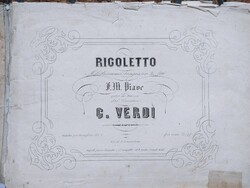Mdina Cathedral, 18th century crib (2021)
What better time than Christmas to share with you some interesting archival information on the Christmas crib in Malta. It is evident that by the 17th century the custom of annually preparing a crib in churches and in confraternity oratories had gained ground. I didn't look at earlier documents, and unfortuanately I have not looked at the Franciscan archives yet. But this is worth sharing all the same.
In the Jesuits' church in Valletta, a crib (presepio) was being put up by the sacristan in the 1640s and 1650s for which there was an annual expense of 2 to 3 scudi. No details are given except that foliage (fogliami) was used. The sacristan, who was a Jesuit brother, is also recorded making the statue or figures we now call pasturi, at a cost of another scudo. (ACM, Fondo Gesuiti, Giornale 1638-1646)
This crib would have been given pride of place and music by several singers and instrumentalists on Christmas eve, Christmas day as well as on the feast of the Cicumcision of Jesus (1st of January) would have enhanced these important celebrations.
Fil-knisja tal-Ġiżwiti, l-Belt is-sagristan kien qed jitħallas għal presepju li bena kważi kull sena bejn 1640 u 1650ijiet. L-istess sagristan tħallas ukoll għall-'istatwi' jew pasturi li għamel. Kull ma nafu hu li fil-presepju intuża xi tip ta ħaxix.
The Confraternity of Our Lady of Charity in Valletta was erecting what they called prospettive di Natale (1657). These constructions depicting the Nativity were made of wood, cloth, carton, and matt gold paint (ACC, HMML, 00170, 114V). . The first direct reference to a presepe in their oratory appears in 1686. The confraternity archives give very specific details on the materials purchased for making the crib; turpentine, a pot, and a stone oven (termentina, una pignata, un fucolare). Their crib was also illuminated with oil lamps.
With this backdrop of cribs and prospettive it became customary over the Christmas period to hold 40 hours of devotion, known as the Quarant'ore, with a number of muiscians providing music for the hours of devotions (ACC, HMML, KKM_00172, 295R).
Fil-fratellanza tal-Madonna tal-karita tal-Belt kienu qed jagħmlu 'prospettive' tal-Milied fl-1657. Dawn kienu magħmulin mill-injam, drapp, kartun, u xi zebgħa tad-deheb.L-ewwel darba li jissemma l-presepju fl-Oratorju tagħhom hu fl-1686 u hawn nafu li xtraw it-terpentina, xi kontenitur u l-fuklar biex jagħmlu l-presepju li fl-aħħar kien mixgħul b'ħames lampi taż-żejt. Fl-Oratorju, waqt il-ġranet tal-Milied kienu jagħmlu l-Quarant'ore (40 sigħa ta' devozzjoni) bil mużika.
The Confraternity of Our Lady of Mount Carmel in Valletta engaged artists and carpenters to create the Christmas atmosphere by erecting prospettive di Natale as well as a crib. This was certainly happening in 1659 and possibly earlier. The crib was clearly a central attraction which was illuminated with cinque lampe d'oglio. This Confraternity also held the Quarant'ore del Santissimo Natale in the oratory, spread out over 3 days. A number of musicians were regularly engaged during these devotions.
In 1676 we find that the Confraternity paid the substantial sum of 8 scudi, to their artist Gio Baptista il pintore for costructing their Christmas crib (presepio). This was Giovanni Battista Calloriti (1638-1718) who was part of Mattia Preti's bottega and was at the time also doing other works for the confrternity (ACMC, Accounts book 1667-1689 f.4).
Il-Fratellanza tal-Madonna tal-Karmnu tal-Belt kienu jqabbdu artisti biex jagħmlulhom il 'Prospettive' u l-presepju, kif nafu li kien qed jiġri fl-1659, u forsi anki qabel din id-data. Hawnhekk ukoll kienu jagħmlu l-Quarant'ore bil-mużika u jixgħelu l-presepju b'ħames lampi taż-żejt. Fl-1676 kienu qabbdu lil pittur Giovanni Battista Calloriti, mill-bottega ta' Mattia Preti, biex jagħmlilhom il-presepju.
In Private homes - cribs and bambini
At the same time, a search through inventories shows that there were families who owned their own cribs and also had wax figures of the child Jesus under glass domes in their homes.
In an inventory of 1689 we are told that the late Aloysio Marsan had 3 wax bambini with their glass domes (3 bambini di cera con il loro vetro) (NAM, MCC, Inv. Heredit. 1673-1691 f.875v)
In another inventory of the late Baldassare Belfiore (1712) we see that he had un bambino grande as well as 4 bambini piccoli con vetro di Venetia. Belfiore furthermore owned a presepio behind thick glass with pastori di S Giuseppe e la Vergine grandi di rilievo (NAV, Not Jos. Callus, R126 (25), 1712, f.502v)
In 1752, in the inventory of the late Marchese Gio: Pio di Piro we find due piccoli bambini and una cassa di bambini senza vetri. (AdeP, A19)
Fid-djar Maltin, fl-istess perjodu insibu li kien hemm min kellu bambini tax-xemgha kif ukoll presepji.
Fl-1689 Aloysio Marsan kellu 3 bambini tax-xemgħa taħt il-bozza tal-ħġieġ.
Ieħor, Baldassare Belfiore, fl'1712 kellu bambin kbir u 4 bambini zgħar taħt il-ħġieġ (bozza) ta' Venezia. Dan kellu ukoll presepju bil-pasturi kbar ta' San Guzepp u l-Madonna wara/taħt ħġieġ oħxon.
Fl-1752 il- Markiz Gio. Pio Di Piro kellu 4 bambini zgħar u kaxxa bambini mingħajr il-ħġieġ
 Bambini.
Bambini. Private Collection

























